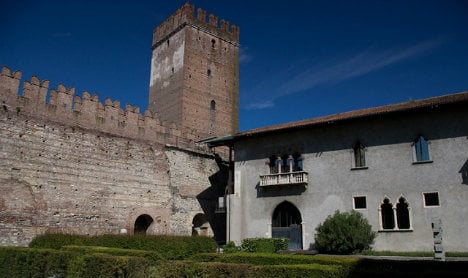“It is a great day,” the minister, Dario Franceschini, said in a statement. “The artworks will soon be back in the Castelvecchio (museum) in Verona.”
The recovery of the 17 paintings, which had a combined estimated value of €15 million euros ($16 million) follows the arrest in March of 12 suspected members or accomplices of a Moldovan gang which the Italian authorities believe carried out the heist in November 2015.
Franceschini thanked the Ukrainian authorities for their help in tracing the art works which Italian media reported had been stolen to order for a buyer based in Chechnya.
Ukrainian President Petro Porochenko said the recovery of the paintings was a sign to the world that “Ukraine is starting to effectively combat smuggling, including smuggling of artworks, but also to combat corruption.”
Verona's mayor also voiced his delight.
“We are breathing an enormous sigh of relief and we are very happy because it is an important piece of Verona that is to be returned to the citizens of the city and the whole world,” Flavio Tosi said.
At the time of the robbery, police said it appeared the works had been stolen 'to order' for a private collector, given the difficulty anyone would have in selling on works by such well-known artists.
Three masked men entered the 14th century building at the evening change of guard, slipping in after the museum had been emptied but before its state-of-the-art security system had been put into overnight mode.
A security guard and another member of staff were tied up before the pictures were taken.
The guard was one of the suspects arrested, along with his brother and the brother's Moldovan girlfriend, who is suspected of having alerted the robbers to the potential to pull off the audacious heist.
The thieves' haul included “Portrait of a Lady” by Flemish Baroque painter Peter Paul Rubens and “Male Portrait” by Venetian artist Tintoretto, as well as works by Pisanello, Jacopo Bellini, Giovanni Francesco Caroto and Hans de Jode.
Another acclaimed work, “The Conversion of Saul”, by Italian Renaissance painter Guilio Licinio, was damaged during the robbery but has since been successfully restored.



 Please whitelist us to continue reading.
Please whitelist us to continue reading.
Member comments